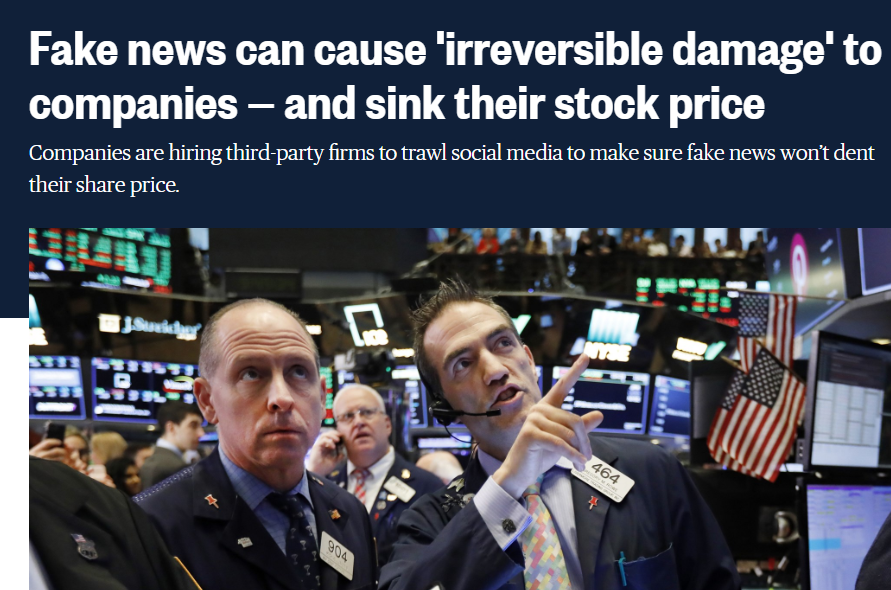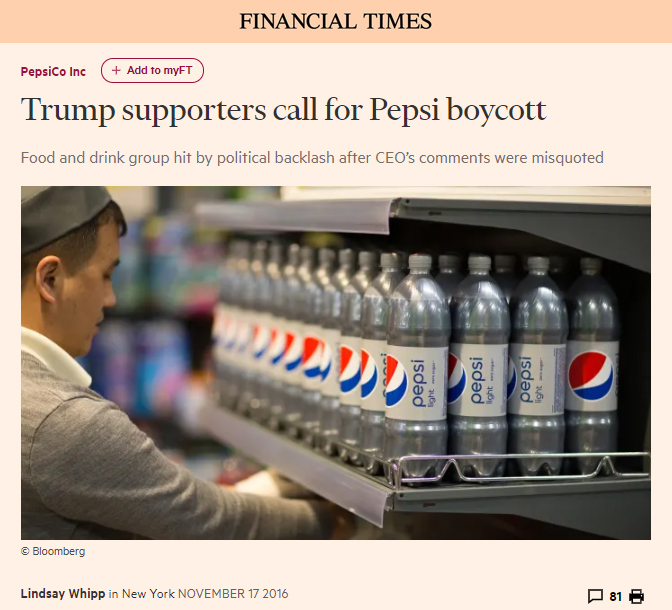This article was originally published on Finsbury.com
Finsbury’s head of digital strategies, sits down with Gideon Benaim, Partner at law firm Simkins, to discuss approaches for responding to the threats posed by fake news.
Gideon Benaim is one of the UK’s leading reputation lawyers, on The Lawyer’s Hot 100 list. He has acted for multinationals and individuals in some of the most influential cases on defamation and privacy against media and online publishers from Leveson to Sir Cliff Richards.
Meglena Petkova: Gideon, at Finsbury we often look at fake news in the context of crisis preparation. We work with clients to increase digital resilience ahead of key events and announcements or as part of a best practice digital communications channels launch strategy. We would lock down domains to pre-empt impersonation attempts, conduct social media fake follower audits and of course have 24/7 monitoring and escalation processes in place.
A big challenge, however, is posed by the role of large technology and social media platforms which meaningfully contribute to the rapid spread of information online. What are these technology-enabled social media, search engine giants, as well as governments around the world doing to mitigate the risks of fake news and misinformation attempts?
Gideon Benaim: Governments around the world are looking at the many ways of confronting the problem, including by introducing regulation. The solutions are however going to come from across the board, including primarily from the tech companies themselves, as one cannot expect regulation to work on its own. The issues raised by the Internet are of course a global problem. Territorially, governments are introducing legislation – one such piece is the EU code of practice on fake news, and the likes of Google, Facebook, and Twitter have already submitted plans on how they will abide by it to the European Commission. Singapore’s new law to combat fake news, by giving greater intervention powers to the government came into force this year, notwithstanding the criticism it received of course. However, just like governments, social media companies won't be able to prevent every single incident from happening.
M.P.: This leaves us needing to be able to prepare and respond to the real threat of fake news attacks. Preparation is key to clients’ abilities to provide a rapid response but acting on the spot, in real-time is just as important. We will most often deploy digital marketing approaches focusing on paid content distribution as these allow for quick rebuttal message delivery in order to dismiss accusations and speculations in a highly targeted way. We would use paid social, Google ads as well as proactive media engagement to reach stakeholders who may be exposed to malicious information online.
My question to you is: what are the legal approaches and considerations that companies should embrace as soon as they are made aware of the spread of false information online?

G.B.: You want to try to gain control of the situation very quickly, using social media platforms and approaching news aggregators rapidly, to ensure that people are made aware of the true position and reassured that the company has the matter in hand.
Depending on the circumstances, the legal approach may be a criminal or civil one, or both. Equally, it is critical to ensure that the mainstream media and stakeholder groups online are made aware of the situation. Publishers, both online and offline, should be requested to correct any of the articles that have been published so far as, and as soon as, possible. This is most efficiently achieved through a combination of proactive communications as well as legal approaches where appropriate.
M.P.: I would argue that the rapid rebuttal digital approach I mentioned earlier is the most effective way to countering false narratives online while working with our legal partners to understand potential defamation implications. We would then jointly analyse and prioritise the digital platforms that we or our legal partners should approach in order to contain the spread of information on the back of a robust legal rationale.
As such, in today’s fast paced online information world, online communications rebuttal strategies can help with quickly rebutting and reducing the risks of fake news while the legal approach is crucial to the longer term protection of the brand and permanent removal of defamatory content.
In this context, when it comes to speed, how quick are the tech companies, in terms of responding to legal take-down and removal requests for articles or other pieces of false information?
G.B.: It varies. It may depend on the type of information, whether it may be criminal in nature, whether there is a public safety issue. In such cases social media companies are a bit faster at responding and acting upon your request. In this scenario content can be taken down in a matter of hours. But in other situations, it may take weeks and months, and in some situations, unless you pursue them all the way to the court, you may not get it taken down at all. There is a lack of consistency and transparency, but things are getting better!

M.P.: We both agree then that the best way to stop fake news is to take responsibility, have technology and processes in place to spot, escalate and react quickly. Realistically, when it comes to speed, this depends entirely on the company’s ability to launch and deploy online channels. This is a real minefield and often underestimated by clients. Technology giants, in their effort to more effectively police “fake news” on their platforms have put strict paid campaign requirements in place. This can often delay the ability to respond quickly online – it can cause delays of up to 3 days in the case of Google, and up to 14 on Twitter. Overcoming those challenges means we aim to integrate this into all our proactive digital strategies as well as when delivering crisis preparedness and digital defence trainings.
On the point of challenges, when it comes to addressing misinformation attacks and coordinating different geographies and regulatory frameworks, what are key legal obstacles and considerations for companies to bear in mind?
G.B.: Apart from going after the social media companies who may refuse to take something down, it's quite important to try and identify the parties who are behind the misinformation. This is in fact what the social media companies want you to do, because they appear keen to proclaim, they are not responsible for the actions of their users. However, social media companies are effectively publishers – they should be accountable and take notice if something unlawful is taking place on their platforms and act responsibly.
Social media companies are waking up to this reality, perhaps due to increased pressure, and they're starting to be a bit more cautious about abuse on their platforms. The key to all of this is probably what happens in America where most of them are primarily based, and what restrictions on free speech are palatable to them. Technology giants are beginning to accept that real harm is being done to both individuals and companies and are being forced to act accordingly.